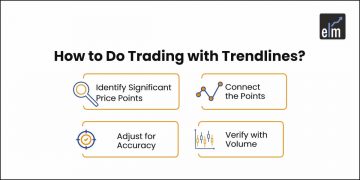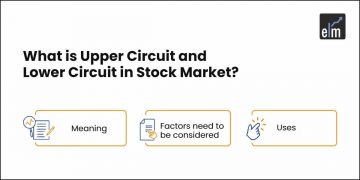In an interesting session as a part of the highly popular Face2Face series, conducted by Elearnmarkets, Mr Vivek Bajaj, Co-founder of Elearnmarkets, invited Mr Brian Shannon successful stock market investor with many years of experience, to decode VWAP Strategies for Profits in Stock Markets.
Mr Brian Shannon is a CMT, also an American author, equity trader, and technical analyst. He published his acclaimed book entitled ‘Technical Analysis Using Multiple Timeframes’ in 2008 to educate beginning and intermediate traders on the tools and techniques that have made him “one of the best indie traders”.
The book is ranked as the 4th top trading book on Amazon. He currently focuses on trading, providing daily focused market analysis, and educating swing traders.
This blog will light on VWAP strategies that can help our learners gain profit in the stock market. Stock markets require patience and the proper technique to maintain a position, but sometimes people cannot control their emotions.
Understanding Market Structure
Before we drive into VWAP strategies, let us first understand the 4 stages of market structure:
The market cycle can be broken into four stages – the accumulation stage is kind of where it’s been in a previous uptrend, and it’s broken down and gone sideways. In this stage, one can anticipate a long position as the buyers regain control.
It’s basically a period of the neutral market that he doesn’t want to be involved in as he is a trend trader.
Instead, he wants to focus on the stage 2 uptrend if we’re in an uptrend, i.e. based on Charles Dow and the tenets of technical analysis that when the trend is once established, it is more likely to continue than reverse.
Stage three occurs after the markup. Again, we have a chance where the market starts to turn sideways, and in stage 4, the markets decline where traders should avoid long positions and participate in short positions.
Having understood about the market structure, let us discuss the VWAP indicator:
What is VWAP?
Price, volume, and time are components of the volume-weighted average price. Time is the most subjective because we all have different time frames, for example, Mr Brian Shannon is a swing trader, other people listening might be investors, and some people might be scalpers who are trading off 30-second charts.
Now let us come to price- we want to find out who’s in control, whether the buyers or the sellers or do we have this equilibrium.
So when the demand is more significant than supply, obviously, what happens is prices move higher. That’s a stage two uptrend; when we have sideways action, it’s either after a rally or starts to turn sideways.
After the prices decline, it accumulates and leads to an uptrend when supply is greater than demand. Prices move lower to find enough demand to support the prices.
Intraday Bullish VWAP Strategy
On a bullish time-frame, we want to see a one-minute time frame.
A bullish chart will tend to find buyers at the rising volume-weighted average price, so if the market is above an increasing volume-weighted average price for the session, one should not short
He would rather want to buy as it’s breaking this range with a stop loss.
Intraday Bearish VWAP Strategy
There is no difference in the analysis, and the opposite of the above strategy is valid for the short side.
You can also watch our webinar on How to trade using VWAP indicator
VWAP Guidelines
The guidelines are very similar to a traditional time-based moving average. This cumulative volume-weighted average price takes it from one point and adds up all the volume divide. So it adds up all the prices times the number of shares and is divided by the volume.
So we want to be aware, just like a 50-day moving average, is it rising if it’s rising, it generally means we give the benefit of the doubt to the buyers.
If it’s declining, then we give the benefit of doubt to the sellers and if it’s flat and the prices are going back and forth above and below it a lot of people will say that well that volume-weighted average price is useless that it’s just going back and forth above and below it.
That’s the beauty of it that the value right there tells us there’s no trend here; stay away from it and wait for it to break.
Once the resistance breaks, one can set their stop-loss and see if a new trend emerges. But, again, it aligns with that longer-term time frame, so there’s value in recognizing those neutral periods.
You can watch the entire video here
Bottomline
We hope you found this blog informative and use it to its maximum potential in the practical world. Also, show some love by sharing this blog with your family and friends and helping us in our mission of spreading financial literacy.
Happy Investing!
You can also visit web.stockedge.com, a unique platform that is 100% focused on research and analytics.











